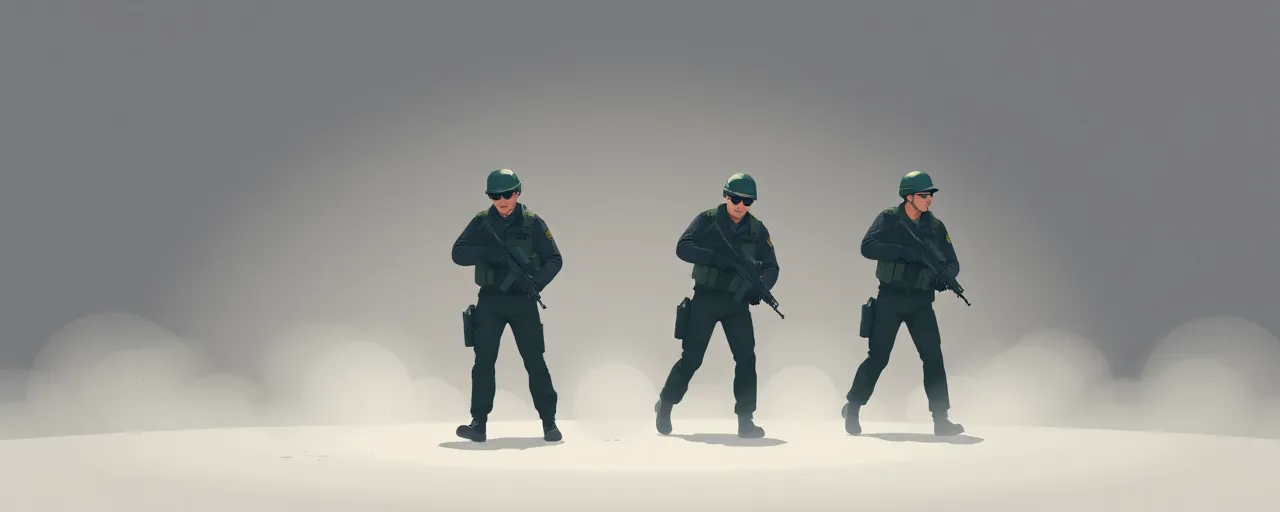A Fugitive Caught
Late last night, federal agents descended on a quiet New York neighborhood, apprehending Joel Vargas-Escobar, a man accused of orchestrating a brutal string of 11 murders tied to the notorious MS-13 gang. Known on the streets as 'Momia,' Vargas-Escobar had evaded capture for nearly four years, a fugitive whose alleged crimes stretch from Las Vegas to California, leaving a trail of violence that has gripped communities and law enforcement alike.
The arrest marks a significant moment in the U.S. Department of Justice’s ongoing campaign against transnational criminal organizations. Vargas-Escobar, indicted in Nevada, faces charges of racketeering conspiracy, murder in aid of racketeering, and firearms offenses. His capture underscores a broader effort to dismantle MS-13, a gang with roots in Central America that has spread its influence across at least 10 U.S. states and Washington, D.C., affecting thousands of lives.
The Reach of MS-13
MS-13, or La Mara Salvatrucha, began in the 1980s among Salvadoran immigrants in Los Angeles, a response to the chaos of civil war back home. Over decades, it evolved into a decentralized yet deadly network, with cliques operating under leaders like Vargas-Escobar, often called 'shot callers.' Court documents paint a chilling picture: the gang’s Parkview clique, allegedly led by Vargas-Escobar, kidnapped victims, dragged them to remote deserts or mountains, and carried out executions marked by torture.
Beyond U.S. borders, MS-13’s presence looms large in El Salvador, Honduras, and Guatemala, where it employs an estimated 60,000 people alongside its rival, the 18th Street gang. The group funds itself through drug trafficking, extortion, and human smuggling, often targeting vulnerable immigrant communities. Its collaboration with Mexican cartels and expansion into Europe signal a growing sophistication, blending street-level brutality with global ambition.
A Coordinated Crackdown
Vargas-Escobar’s arrest didn’t happen in isolation. It’s the latest success for Joint Task Force Vulcan, a coalition launched in 2019 to target MS-13’s leadership and financial pipelines. The operation, involving the FBI, DEA, and U.S. Attorney’s Offices nationwide, has disrupted the gang’s command structure by zeroing in on figures like Vargas-Escobar, who allegedly ordered murders from his perch in Las Vegas. International partnerships with El Salvador, Honduras, and Mexico have bolstered these efforts, intercepting cash flows and sharing intelligence.
This takedown also ties into Operation Take Back America, a sweeping initiative rolled out in March 2025 to curb illegal immigration and transnational crime. In its early weeks, the operation charged over 960 people with offenses ranging from illegal reentry to human smuggling, many with prior felony records. Supporters say it’s slashed border crossings by 93%, though some question whether expedited deportations risk overlooking due process for migrants caught in the crossfire.
Deportation’s Double Edge
Vargas-Escobar’s story highlights a tangled issue: illegal reentry. Deported to El Salvador in 2018, he slipped back into the U.S., a move that’s not uncommon among gang members facing charges. Laws like the Criminal Alien Gang Member Removal Act aim to block such returns by fast-tracking deportations and barring gang affiliates from asylum. Yet the cycle persists, with over 160 individuals charged under Operation Take Back America having felony histories before reentering.
Deportation can disrupt gang networks in the short term, but it’s not a clean fix. In Central America, returned members often regroup, fueling violence in countries with strained resources. Advocates for immigration reform argue that tracking deportees post-removal remains spotty, while others point to human rights concerns when removals happen too quickly. It’s a knotty problem, balancing security with the realities of migration.
The Legal Arsenal
Federal prosecutors are leaning hard on the Racketeer Influenced and Corrupt Organizations Act, or RICO, to take down MS-13. The law lets them target entire criminal enterprises, proving a pattern of crimes like murder or extortion. For Vargas-Escobar, a conviction could mean life in prison, a sentence shaped by the U.S. Sentencing Guidelines and a judge’s discretion. Tools like asset forfeiture also hit the gang’s wallet, cutting off funds that fuel its operations.
This approach has history. Since the 1970s, RICO has unraveled everything from the Mafia to modern gangs, holding leaders accountable for orders they give, not just acts they commit. Conspiracy charges widen the net, while plea deals flip lower-level members into witnesses. It’s a slow grind, but one that’s chipped away at MS-13’s grip, offering a deterrent through the promise of stiff penalties.
What Comes Next
Vargas-Escobar’s initial court appearance today in New York sets the stage for a high-profile trial in Nevada. He’s been ordered detained, a nod to the gravity of the charges and his years on the run. If convicted, his case could signal a turning point in the fight against MS-13, though the gang’s resilience suggests this is far from the final chapter. For now, law enforcement celebrates a win, but the broader battle rages on.
The arrest ripples beyond courtrooms. It’s a stark reminder of the human cost tied to transnational crime, from victims in Nevada’s deserts to families caught in Central America’s gang wars. Efforts like Joint Task Force Vulcan and Operation Take Back America aim to break that cycle, blending aggressive prosecution with border security. Whether they succeed long-term depends on navigating the messy intersection of crime, migration, and global cooperation, a challenge that’s as real as it gets.
